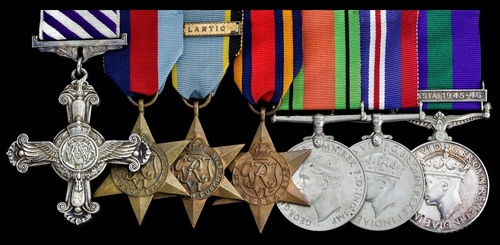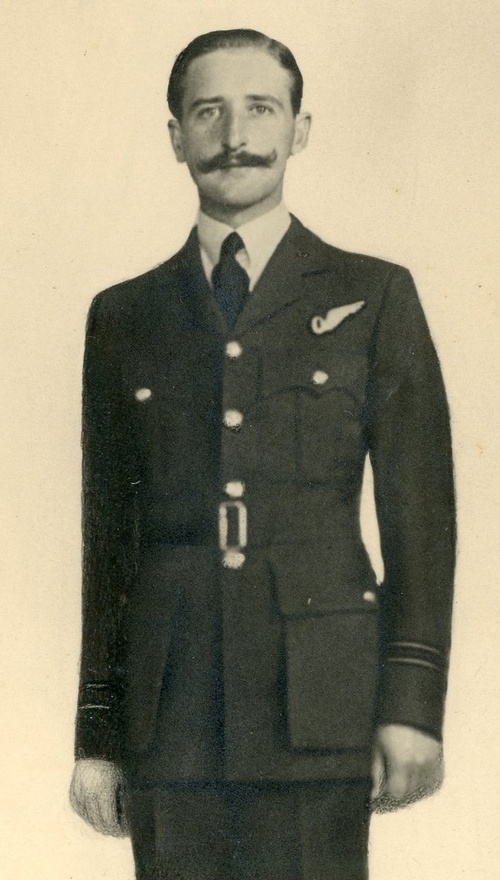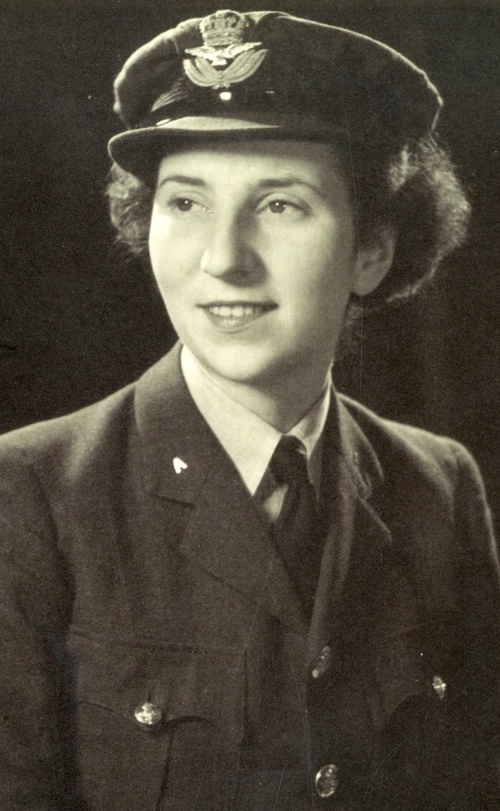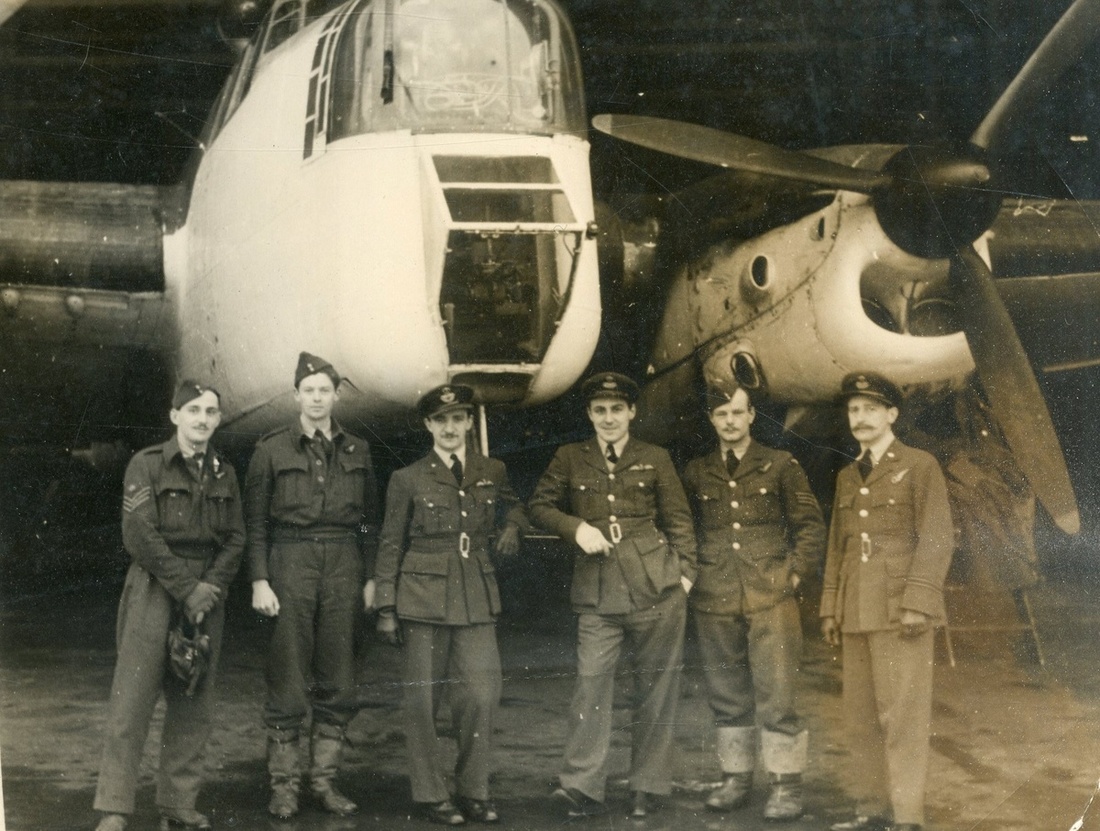Auction: 18001 - Orders, Decorations and Medals
Lot: 37
Family group:
A remarkable Second World War D.F.C. group of seven awarded to Squadron Leader L. C. McConnell, Royal Air Force Volunteer Reserve, a veteran of three tours of duty and a staggering tally of 107 operational sorties
Having served as an Observer in Blenheims of No. 59 Squadron in the Battle of Britain - he was awarded the clasp to his 1939-45 Star but the distinction was rescinded by an Air Ministry Order in 1960 - he undertook protracted anti-submarine sorties in Whitleys and Wellingtons of Coastal Command and participated in a 'periscope depth' attack on a U-Boat in October 1942
He then volunteered for a third tour of duty and undertook numerous 'special duties' operations in Liberators of No. 358 Squadron over Burma in 1945, dropping agents and supplies into Japanese occupied territory: on one such mission he was compelled to take to his parachute
Distinguished Flying Cross, G.VI.R., the reverse officially dated '1945', with its Royal Mint case of issue; 1939-45 Star; Air Crew Europe Star, clasp, Atlantic; Burma Star; Defence and War Medals 1939-45; General Service 1918-62, 1 clasp, S.E. Asia 1945-46 (S./L. L.C. McConnell, R.A.F.), mounted as worn, good very fine or better
The Second World War campaign group of three awarded to Acting Squadron Officer H. L. McConnell, Women's Auxiliary Air Force
Defence and War Medals 1939-45; General Service 1918-62, 1 clasp, S.E. Asia 1945-46 (Act. Sqn. Off. H. L. McConnell, W.A.A.F.), mounted as worn, together with a set of related miniature dress medals, good very fine or better (19)
D.F.C. London Gazette 19 October 1945:
'Squadron Leader McConnell has completed three tours of operations. He has participated in various types of sorties, including escort, reconnaissance and anti-submarine patrols. Since being posted to the Far East he has taken part in many long-range operations. He is an outstanding Navigator who has been responsible for the success of many of his missions.'
Leonard Charles McConnell enlisted in the Royal Air Force Volunteer Reserve shortly after the outbreak of hostilities in September 1939 and qualified as an Observer.
No. 59 Squadron - rescinded Battle of Britain clasp
Commissioned in June 1940, he was posted to No. 59 Squadron, a Blenheim unit of Coastal Command, in mid-September 1940 and joined Pilot Officer James's crew. They flew their first sortie - an anti-invasion patrol - on the 18th and completed similar trips to Boulogne and Cherbourg before the month's end. In the following month, they carried out bombing sorties to Brest and Lorient.
As a result of these operations, aircrew in No. 59 Squadron were included on the Air Ministry's original list of those entitled to wear the Battle of Britain clasp. And that remained the case until November 1960, when a revised list of those squadrons considered to qualify for the clasp was issued: No. 59 Squadron was no longer on it.
What led to this reversal of entitlement for the aircrew of No. 59 Squadron might be explained by the fact that the Squadron was a Coastal Command unit as opposed to a Fighter Command one. That said, No. 59 Squadron actually fell under the control of Fighter Command during the Battle of Britain, as did No. 235 Squadron, another Coastal Command Blenheim unit. However, the revised Air Ministry Order of November 1960 did not exclude the latter squadron from the right to wear the clasp: one ex-pilot of No. 59 later described how 'the feelings about this change ran pretty high at the time, I can tell you!'
In November 1940, McConnell participated in eight operational sorties, among them bombing strikes on Lannion, Rennes and Vannes aerodromes; in December, nine further sorties were flown, including further strikes on enemy aerodromes, in addition to a search for survivors from H.M.S. Acheron.
In the new year, on 4 January 1941, he was detailed to an attack on the Admiral Hipper at Brest, followed by several recce. flights in February. Two of the latter ended in crash-landings, one of them on account of damage sustained from an enemy night fighter. Tour expired he was rested.
612 and 179 Squadrons: 2nd operational tour
In October 1942, McConnell returned to the operational scene with a posting to No. 612 (County of Aberdeen) Squadron, a Whitley unit of Coastal Command based at Wick. He was quickly back in action with a new pilot, Flying Officer Imber, when, on the 21st, they attacked a submerged U-Boat 'at periscope depth' with six depth charges. No results were seen.
McConnell subsequently flew regular anti-submarine patrols with various pilots, in addition to the occasional search mission, one of the latter resulting in the discovery of the torpedoed tanker Vardefjell on 21 December 1942. He and his crew later shared in Prize Money, for the stricken vessel was beached and salvaged.
On 26 January 1943, following the Squadron's conversion to Wellingtons, McConnell participated in a recce. of the Skagerrak in search of the Scharnhorst and Prinz Eugen.
Having then flown a brace of anti-submarine patrols off Bordeaux and in the Bay of Biscay in February, he transferred to No. 179 Squadron at Gibraltar in May 1943 and flew a further 30 anti-submarine sorties in the period leading up to August, several of them as convoy escort.
He was rested back in the U.K.
No. 358 Squadron: 3rd operational tour - 100 up
In early 1945, McConnell commenced his third tour of duty as a Squadron Leader in Liberators of No. 358 Squadron, out of Burma.
His subsequent sorties were of the 'special duties' variety, all 23 of them involving the dropping of supplies and agents into Japanese occupied territory. On one such mission, on 28 July 1945, with Flying Officer Kearns at the helm, their Liberator hit the jungle canopy: climbing rapidly, Kearns ensured that everyone could bale out.
Thus ended McConnell's remarkable wartime career, in which he had flown 107 operational sorties. He was awarded the D.F.C.
Yet his so-called period of rest in a Dakota unit of Transport Command was to entail further operations over South-East Asia, among them a sortie to Sumatra on 10 March 1946 (Medal & clasp). Happily, at least, he was re-united with his wife, a Squadron Officer in the W.A.A.F., during the same period of operations.
Sold with a quantity of original documentation, comprising:
(i)
The recipient's R.A.F. Observer's and Air Gunner's Flying Log Book (Form 1767 type), covering the period December 1939 to July 1946.
(ii)
Buckingham Palace D.F.C. forwarding letter in the name of 'Squadron Leader Leonard C. McConnell, D.F.C.'
(iii)
The recipient's application for his campaign awards and related Air Ministry letter, dated 16 January 1947
(iv)
Further Air Ministry correspondence concerning the tanker Vardefjell, torpedoed on 17 December 1942 and beached in the Orkneys, and the recipient's entitlement to a share of £2000 of prize money for the vessel's salvage, reference being made to his flight in Whitley of No. 612 Squadron on 21 December 1942, when the stricken vessel was first sighted; together with the recipient's typed submission in response, being a detailed report of those events.
(v)
Wartime photographs of the recipient in uniform and a crew line-up.
(vi)
A Union Jack 'blood chit' from the Burma campaign.
Subject to 20% VAT on Buyer’s Premium. For more information please view Terms and Conditions for Buyers.
Sold for
£2,900











